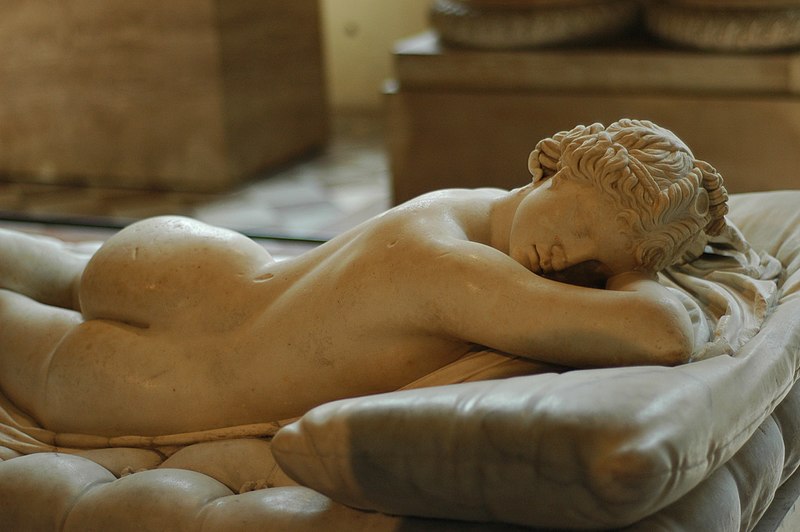
Just hatched at the puparium in the Natural History Museum, London: a gynandromorph Papilio Memnon (great mormon) has been born who is, literally, half male and half female.
The Museum states that:
Insects can become gynandromorphs if the sex chromosomes do not properly separate during the first division of a fertilized egg, resulting in an insect with both male and female cells. They can also occur when an egg with two sex chromosomes, instead of a single one, gets fertilized by two sperm … Of the 9 million butterflies and moths (4.5 million of which are butterflies) looked after at the Museum, only 200 are gynandromorphs.
So, (s)he’s rare, but not alone. The gynandromorph Great mormon has distinctly different male and female markings — darker colourings on the male side and paler colours, with flecks of dramatic blue, red and tortoiseshell on the female side. The butterfly’s sexual organs are half male and half female, and its beautiful antennae are even of different lengths.
In humans, male and female pseudohermaphrodite definitions reflect a shift from a gonadal to a chromosomal assignment of sex. A male pseudohermaphrodite (usually caused by androgen receptor mutations) has a female phenotype but male gonads, while a female pseudohermaphrodite (usually caused by congenital adrenal hyperplasia where the adrenal gland secretes testosterone) has a male phenotype, but has ovaries. In her work on the five sexes, Fausto-Sterling proposes that instead of two sexes, there is a continuum, with five major sexual categories: male, ferm (female pseudohermaphrodite), hermaphrodite, merm (male pseudohermaphrodite), and female. She further estimates that the frequency of all sexually mosaic conditions (hermaphrodites and pseudohermaphrodites) in humans is about 1% of the population. That is, humans have a significantly higher rate of naturally occurring hermaphroditism and pseudohermaphroditism than the butterflies at the National History Museum.
Keep it in mind the next time someone tries to tell you that it’s “just not natural”.

Sleeping Hermaphroditus. Hermaphroditus: Greek marble, Roman copy of the 2nd century CE after a Hellenistic original of the 2nd century BC, restored in 1619 by David Larique; mattress: Carrara marble, made by Gianlorenzo Bernini in 1619 on Cardinal Borghese's request.
The restless boy still obstinately strove
To free himself, and still refus’d her love.
Amidst his limbs she kept her limbs intwin’d,
“And why, coy youth,” she cries, “why thus unkind!
Oh may the Gods thus keep us ever join’d!
Oh may we never, never part again!”
So pray’d the nymph, nor did she pray in vain:
For now she finds him, as his limbs she prest,
Grow nearer still, and nearer to her breast;
‘Till, piercing each the other’s flesh, they run
Together, and incorporate in one:
Last in one face are both their faces join’d,
As when the stock and grafted twig combin’d
Shoot up the same, and wear a common rind:
Both bodies in a single body mix,
A single body with a double sex.
(from Ovid’s Metamorphosis)

No Comments